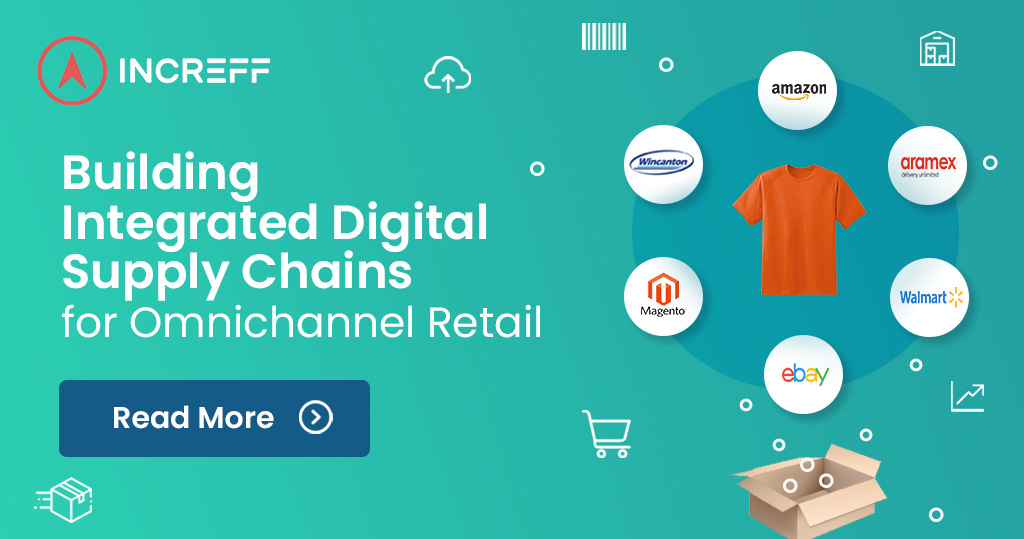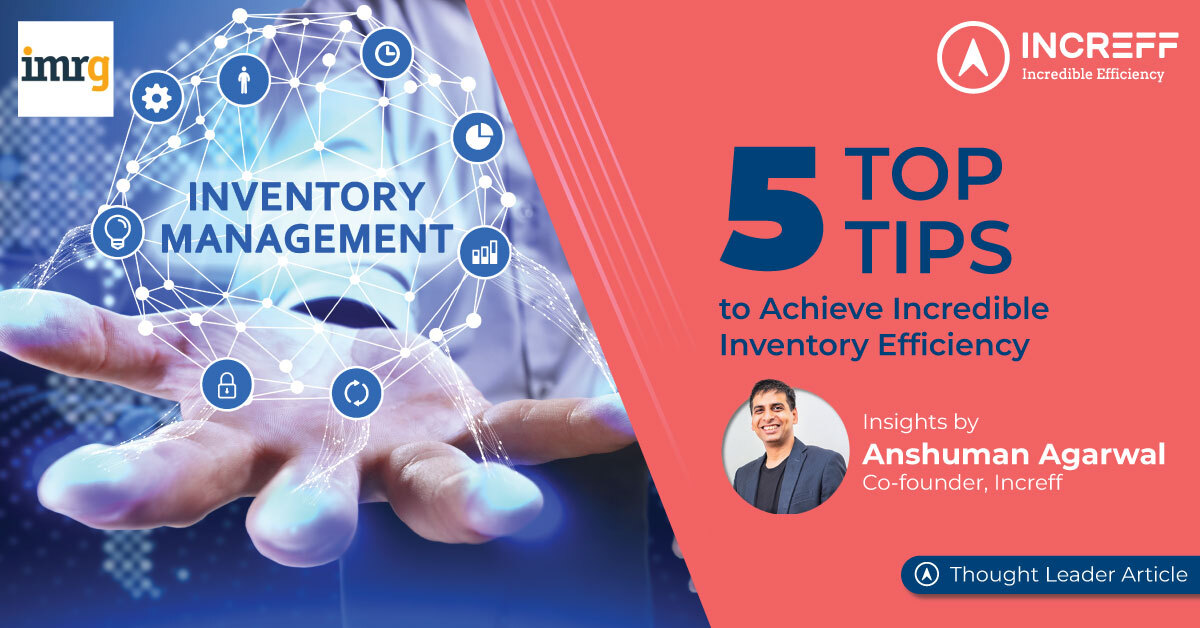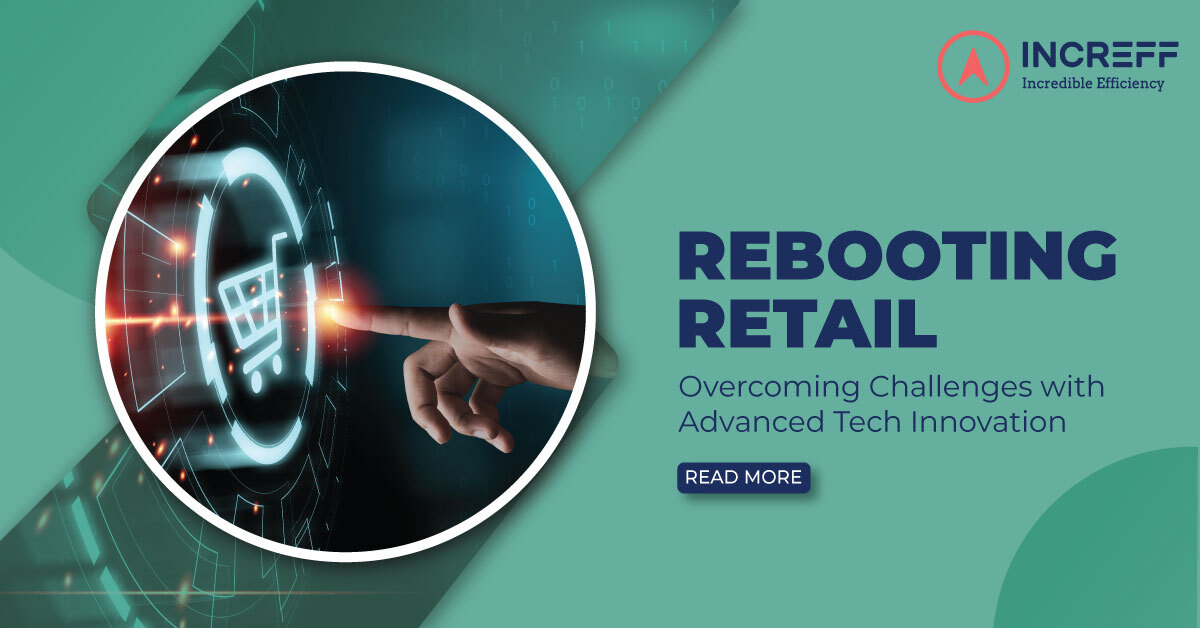
TTechnology
Building Integrated Digital Supply Chains for Omnichannel Retail
Supply chain integration brings together all the functions in omnichannel fulfillment into a single system. It necessitates careful coordination and alignment to ensure everyone is working towards the same objective. Supply chain integration is an ongoing process that needs to be regularly updated and tweaked as the business evolves.
Most common Supply Chain Integrations:
- Vertically integrated Supply Chains: Vertical integration occurs when a retailer takes control of one or more stages in the fulfillment process. Thereby, owning multiple stages of the process with the aim of increasing market share and gaining tighter control over the supply chain. Vertical integration can be backward, towards procurement & production, or forward towards the end consumer.
- Backward Integration: When a retailer expands across multiple supply chain segments beyond its value chain, e.g. merging operations with another company that provides the goods or services required for omnichannel fulfillment. A basic example of backward integration could be that of a fashion retailer partnering with a garment manufacturing unit.
- Forward Integration: When a retailer takes control of the business activities ahead in the value chain, expanding to the next levels of the supply chain and getting closer to the end consumer in the value chain. For example, a fashion retailer pursues forward integration if it partners with a last-mile delivery company.
Marketplaces are a great example of vertical integrations. They bring together sellers and buyers in a single platform, making it easy for both to find what they need; a greater reach to a larger audience, and better prices.
- Horizontally Integrated Supply Chains: Horizontal integration is a strategy when related or similar functions being done by multiple companies merge. In its most basic form, horizontal integration is acquiring a commercial entity operating in the same industry or level. In this technique, a company takes control by buying, merging, or seizing control over other businesses in the same sector’s value chain. Actual examples of horizontal integrations can be Adidas with Reebok and the merger of Vodafone with Idea.
ERPs are an excellent example of horizontal integrations. They combine the various functions of a company, such as accounting, marketing, and purchasing, into a single system, thus allowing companies to streamline their operations and making it easier to track inventory and sales.
Benefits of Supply Chain Integration:
- Improved control over distribution
- End-to-end visibility
- Enhanced flexibility to demand fluctuations
- Increased efficiency
- Cost savings
- Improved customer satisfaction
Methods for increasing productivity & effectiveness through integrated supply chains:
- Present and Future Business Mapping: Determine the present level of supply chain integration and the gap to reach the future desired state. This mapping could be done at four broad levels:
- Basic: At this level, the extent of the silo approach needs to be mapped; if various departments within the company work on issues separately and disconnected.
- Functional: Map the information flow within the company to determine the dependability and responsiveness of interdepartmental working.
- Internal: Determine if all departments and functions are connected to one IT structure, use insights from central data analytics and inter-related information dashboards. Additionally, map the alignment of overall company objectives, for example, the customer-first approach, along the entire value chain.
- External: Determine if all vendors and service providers in the supply chain collaborate and operate almost as one to meet customer demand, boost efficiency and profits, and meet OTIF.
- Data Integration and Data Analytics: Consumers produce an enormous amount of data, that can significantly impact supply chain management and improve demand forecasting. Using consumer and corporate data to identify threats and opportunities in the supply chain can assist retailers in mitigating risks in omnichannel fulfillment. This is only feasible if supply chain system integration is implemented. Also, real-time updates are essential for effective supply chain integration. Everyone involved in the process needs access to up-to-date insights to make quick decisions based on the latest data analytics. Supply chain planning with real-time data analytics ensures economies of scale, OTIF, and that inventory is correctly aligned with demand.
- Integration with Logistics Partners: This ensures that products are stored in distribution warehouses and delivered to the customer quickly and efficiently. Crucial for supply chain integration is better collaboration with vendors through connected systems, leading to overall improvements in inventory management. End-to-end supply chain transformation is required to implement a successful last-mile plan. Retailers must establish a last-mile strategy that addresses their current end-to-end supply chain inadequacies and aligns them with the final objectives. A digitally integrated supply chain, for example, may help distribution centers construct a comprehensive last-mile solution that reduces delivery lead times.
Digital supply chain integration strategies are essential for companies looking to fulfill orders through omnichannel retail. Businesses can streamline their operations and provide a great customer experience using the right tools and tactics. Bringing all the stakeholders together to streamline processes as one continuous and transparent flow might be challenging. There are, however, a variety of tools available today that can make the process of supply chain integration simpler.
11 April, 2022
TTechnology
5 Top Expert Tips to Unlock Inventory Efficiency…
In the ever-evolving landscape of online commerce, businesses face razor-thin profit margins, fierce competition, and…
31 July, 2023
9 months agoTTechnology
How to Succeed in Retail: Overcoming Supply Chain…
As we navigate through the uncertainty of our current times, the age-old adage, "necessity is…
5 July, 2023
10 months agoTTechnology
How does Increff WMS simplify your complex warehousing…
Data from the U.S. Bureau of Labor Statistics suggests that the employee turnover rate in…
24 April, 2023
1 year ago



